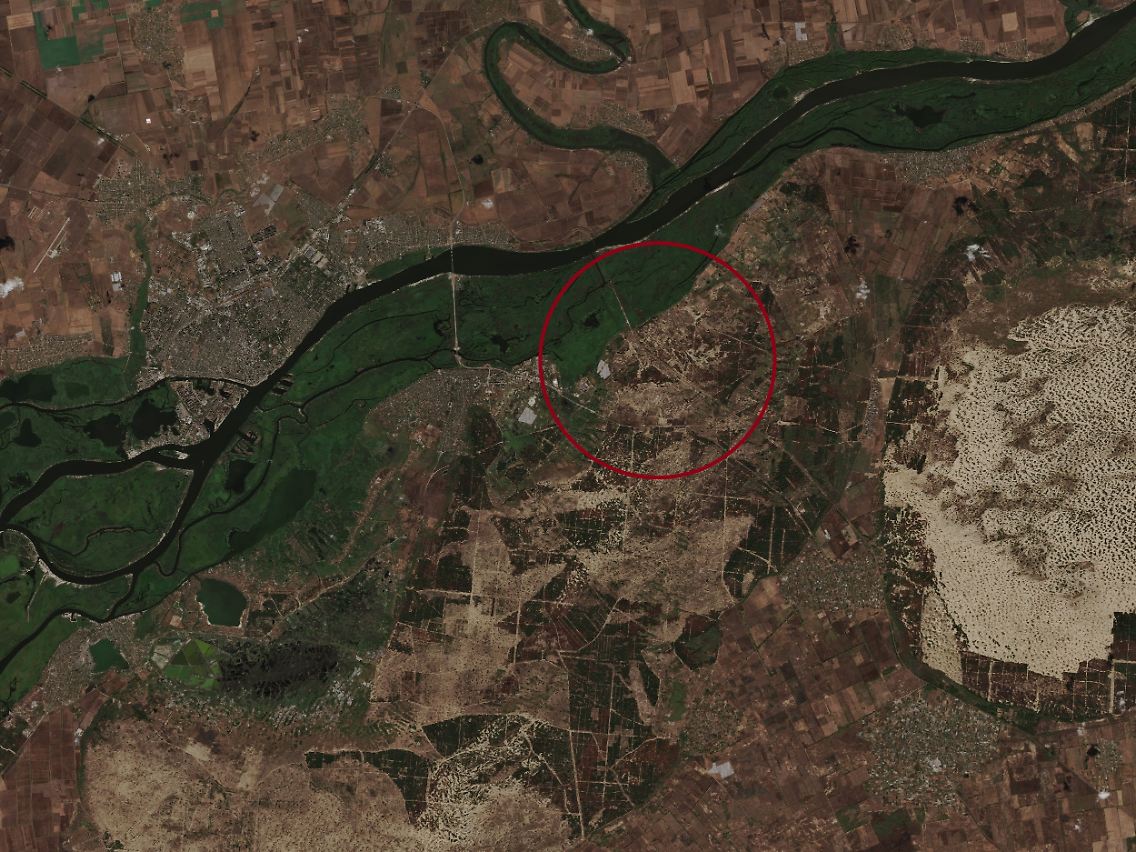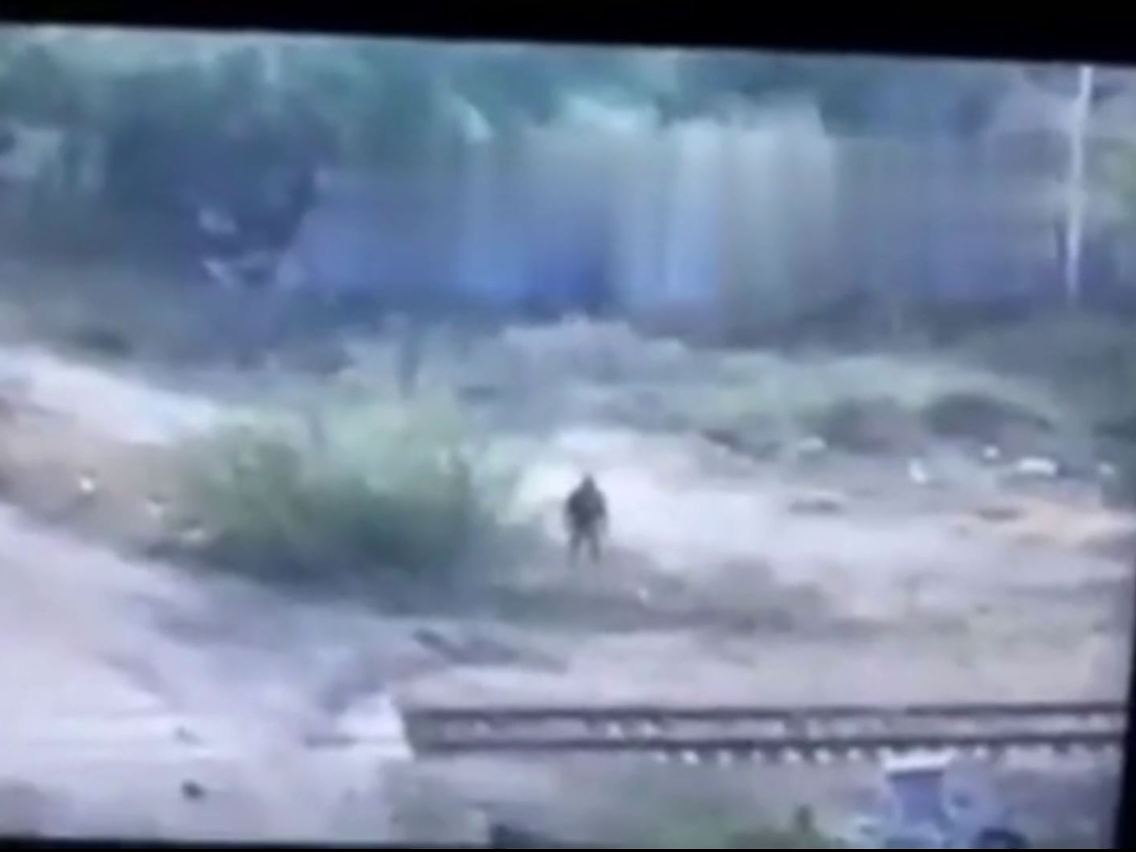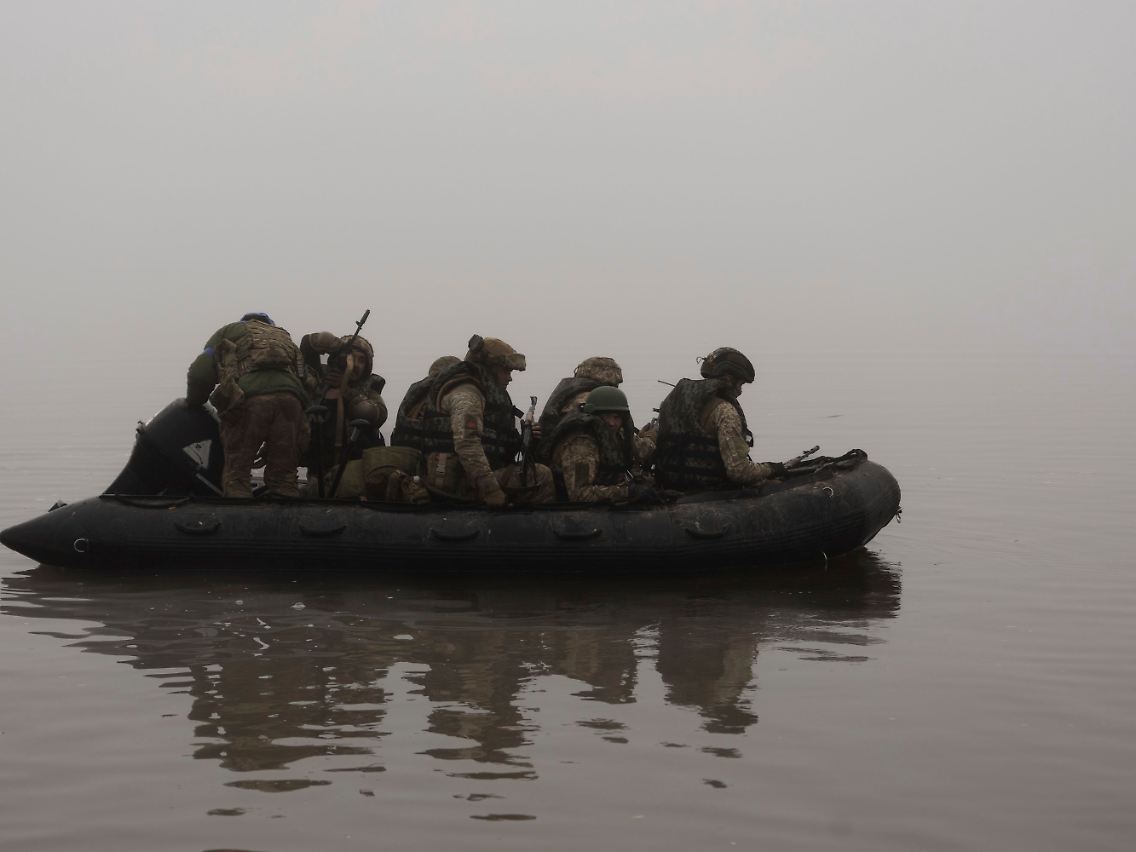Update
Ukrainian advances near Kherson
Putin believes there will be a major attack on the Dnipro
By Martin Morcinek
October 20, 2023, 8:07 a.m
Listen to article
This audio version was artificially generated. More info | Send feedback
Unusual development in the war in Ukraine: Russian military bloggers are drawing the world’s attention to Ukrainian advances on the Dnipro. Kyiv is silent, Putin confirms. Is Russia’s invading army really threatening a new Ukrainian offensive?
Troop movements in southwest Ukraine have caused a stir beyond the country’s borders and raised hopes in the West of a new turning point in the war. It is said that there is growing concern in the ranks of the Russian army about an impending major attack across the Dnipro and another Ukrainian offensive wedge towards Crimea.
However, the information available is thin: so far the speculation has only been triggered by information from Russian sources. Russian military bloggers reported that Ukrainian units crossed the river near Kherson in the middle of the week. The Ukrainians, it was said, had advanced and temporarily established themselves in two towns in the Russian-controlled hinterland. There was initially no comment from the Ukrainian side. The alleged advances across the Dnipro are neither officially confirmed nor denied in Kiev.
Specifically, according to the Russian account, “Ukrainian attack troops” are said to have crossed the river near Kherson in motorboats and landed on the Russian-controlled side on the left, southern bank of the Dnipro. The Ukrainians had “broken through the Russian front lines,” it could be read in relevant Telegram channels. They then took up positions near Pishchanivka and Pojma.
Unlike in previous cases, this time it was not a commando operation by Ukrainian special forces. The Ukrainians, it was said, had attacked near Pishchanivka with units of their marine infantry in company strength. In addition, larger Ukrainian combat units are said to have long been ready on the northern bank near Prydnіprowske. The Russian bloggers see the increased Ukrainian activities as clear indications of an impending landing operation.
The speculation caused major waves in Western circles, especially when it was mentioned in Washington. The US institute ISW, based in the US capital, included the information in its daily situation report, thereby giving Russian concerns about a major attack plenty of additional attention. The descriptions, it was said, however, were based mainly on information from a single prominent Russian blogger, who is also said to have a certain closeness to the Russian Ministry of Defense.
Russian war reporting made it to the general public via a detour: based on the reports from Washington, the media in Kiev then headlined, “Ukrainian elite troops” had crossed the Dnipro and “burrowed in” on the other side of the bank. What sounded like the actual start of the offensive was initially just a reflection of Russian fears. Apart from the allegations from the Internet, there was initially little tangible evidence of Ukrainian action left bank of the Dnipro.
“Hostile forces” near Pishchanivka: still from Russian Telegram video.
(Photo: © Telegram.org @Z комитет + карта СВО)
The ISW tried to substantiate the Russian theses and referred, among other things, to “localizable Video recordings“, which are supposed to show Ukrainian soldiers near Pojma. However, in the pictures in question only shadowy soldiers can be seen who demonstratively venture out of cover at a prominent railway crossing near Pojma. It is unclear why the Russian bloggers choose the route through the general public .
The recordings also appear to come from a Russian source. At least the railway crossing and the surrounding area are open to the public available satellite images locate. The location is on the northern outskirts of Pojma, southwest of Pishchanivka on the railway line from Kherson towards Crimea. Pojma itself consists of nothing more than a few abandoned houses and a loading station on the tracks.
Ideal tank terrain
At first glance, Pojma and Pishchanivka seem to have little strategic importance. The river bank and the damaged railway bridge over the Dnipro are almost four kilometers away from here. The towns mark the edge of the Dnipro lowlands: behind them begins confusing, sandy steppe terrain, through which the M-14 highway, an important route for Russian supplies, runs. In a wide strip, fallow land alternates with reforested forest areas.

View from space of the Dnipro near Kherson: Pojma, Pishchanivka and the railway line towards Crimea are in the red circle.
(Photo: © ESA / Sentinel Hub)
However, if the Ukrainians showed up here one day with battle tanks, a further advance and liberation of southern Ukraine would be difficult to stop: the Dnipro is the last natural obstacle before the isthmus to Crimea. The open agricultural landscapes of the southern Ukrainian plain offer little cover for defenders, but solid ground and a clear view: almost ideal tank terrain.
Ukrainian preparations underestimated?
The prospect of an offensive on the Kherson flank must be a huge headache for Russian military planners. If the Ukrainians were to succeed in jumping over the Dnipro, not only would a new focal point be created far away from the previous troop accumulations, but the route to Crimea would also be wide open. The problem: All road bridges over the Dnipro in the region have been destroyed.
The Russian observers reacted increasingly nervously to the alleged Ukrainian advances in the region, the ISW summarized the mood in the military blogger scene. The Defense Ministry in Moscow is now being accused of underestimating the Ukrainians’ preparations on the lower reaches of the Dnipro and of not being sufficiently prepared for an amphibious landing operation.
It is still completely unclear whether there are such plans on the Ukrainian side and to what extent the Ukrainian movements near Kherson go beyond the strategy of pinpricks that has been pursued so far. In recent months there have been several Ukrainian advances across the river near Kherson. The targets of the raids so far have been exposed positions and Russian outposts close to the water or along the tributaries of the Dnipro.
Actions in the Dnipro Delta, in the Dnipro tributaries near Oleschky and the advance on Kosatschi Laheri are known. At the Antonivka Bridge near Kherson, Ukrainian shock troops were temporarily even able to hold a larger bridgehead on the left bank. The only thing that would be new this time was the attack target being further inland and also the strength of the raiding force with which the Ukrainians are said to have advanced across the river.
Putin speaks out in Beijing
An official statement from Kiev was initially still pending: the Ukrainian military remained silent about the events on the Dnipro. The only indirect confirmation that was taken the day after the incidents was that the town of Pishchanivka appeared without comment and out of nowhere in the Ukrainian General Staff’s “fire list” and was therefore listed as a liberated place that had been shelled by the Russian side.
A kind of confirmation came to the public from an unexpected source. Russia’s ruler mentioned the alleged Ukrainian troop movements on the sidelines of his state visit to Beijing. The Ukrainians had launched the “long-awaited next counteroffensive near Kherson,” Putin casually told reporters. This makes it clear: The nervousness in the ranks of the Russian military has now also spread to the Kremlin. Putin himself assumes that the major Ukrainian attack across the Dnipro is already in full swing.

